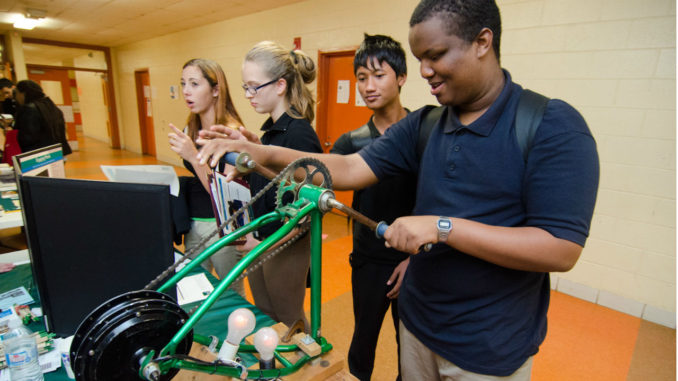
Are U.S. schools teaching hands-off science?
U.S. high school students who regularly handle rocks or minerals in science class did much worse on a recent national science test than those who never engage in such hands-on activities. Students who never mixed chemicals or peered through microscopes in their classrooms did just as well on the test as those who often participated in those activities.
Surprised? Those eye-catching results, from the 2015 National Assessment of Educational Progress (NAEP) in science released last week, seem to fly in the face of conventional wisdom that hands-on learning is the best way to teach science. Last week, for example, the Obama administration honored the nation’s best science and math teachers by staging what it called “Active Learning Day” at the White House.
Government officials refer to the NAEP as the nation’s report card. The science test, which periodically measures what a representative sample of U.S. students in grades four, eight, and 12 know about the life, physical, space, and earth sciences and the scientific process, is part of an ongoing assessment of reading, mathematics, civics, and other subjects. Results for the two younger grades are broken out by state, leading to media coverage that often focuses on why a particular state is ahead of or behind its peers.
For those keeping score, U.S. elementary and middle school students overall did a bit better in science in 2015 than the previous NAEP cohort tested in 2009, and the wide gap between the scores of white and minority students in both of those grades narrowed slightly. In contrast, the scores of the country’s 12th graders didn’t budge, and the racial disparity didn’t shrink.
Read more : http://www.sciencemag.org/news/2016/11/are-us-schools-teaching-hands-science







Leave a Reply